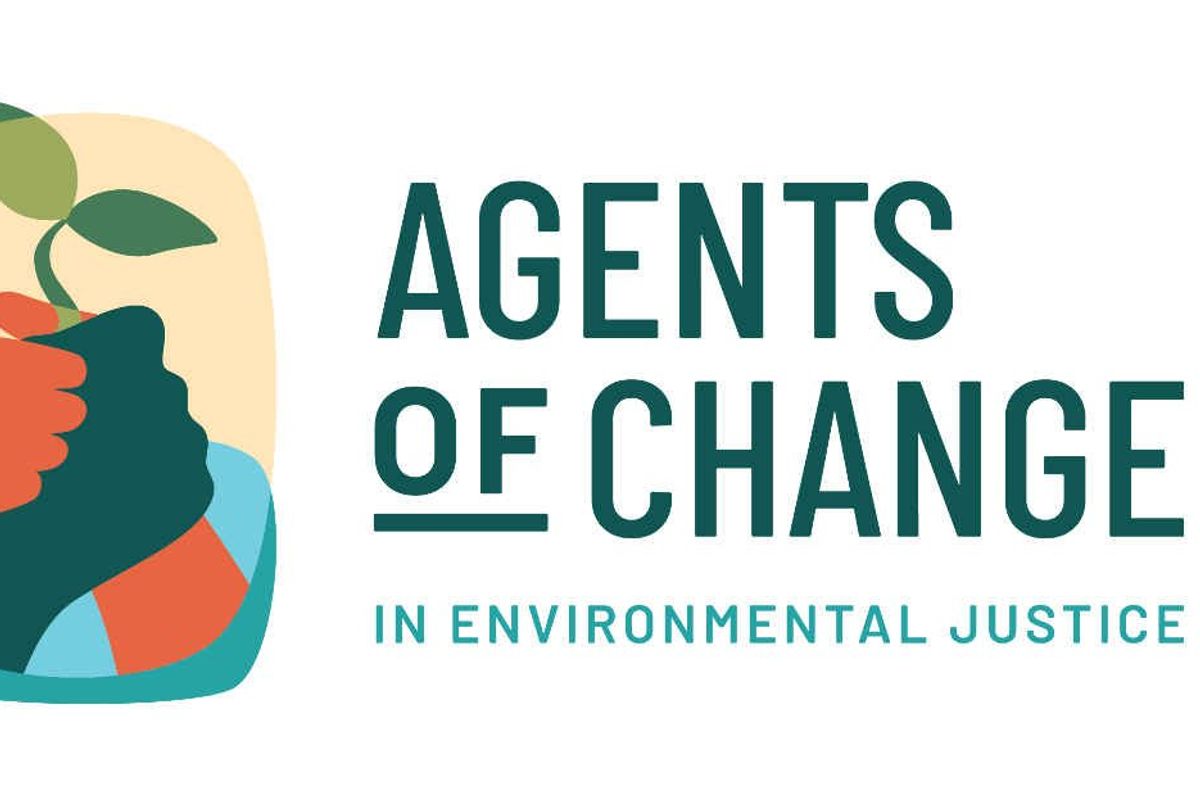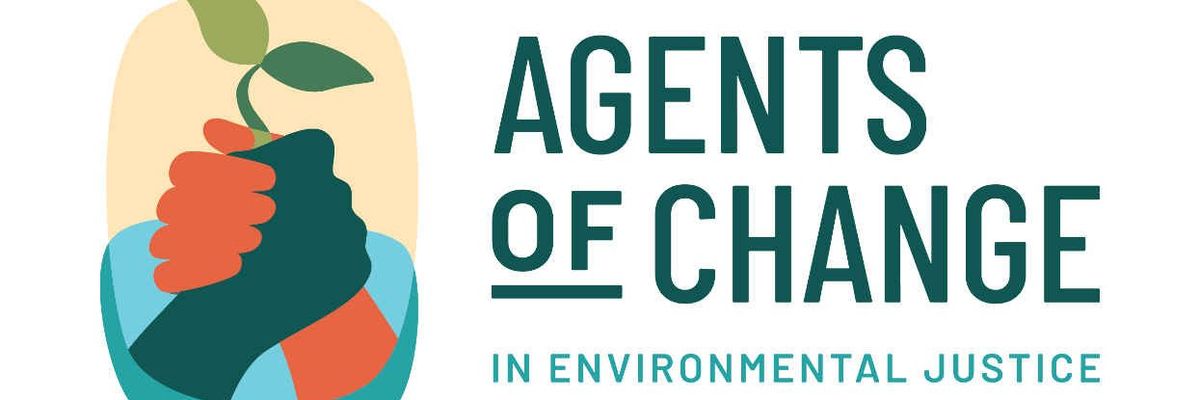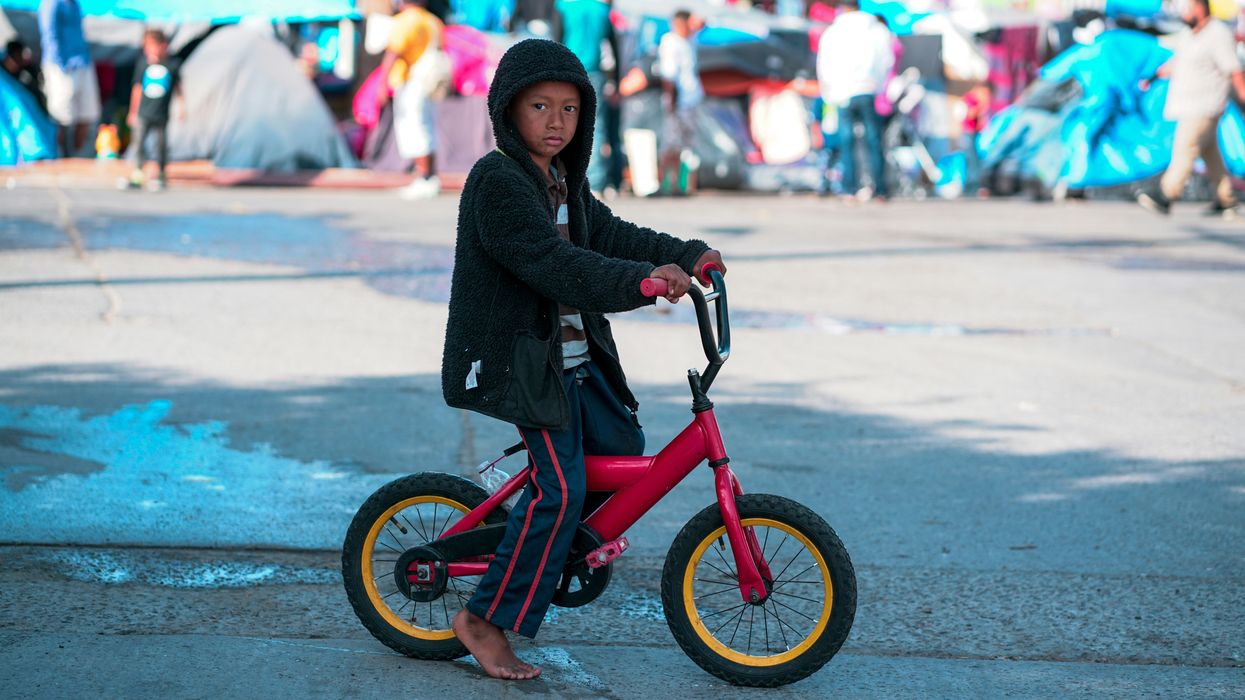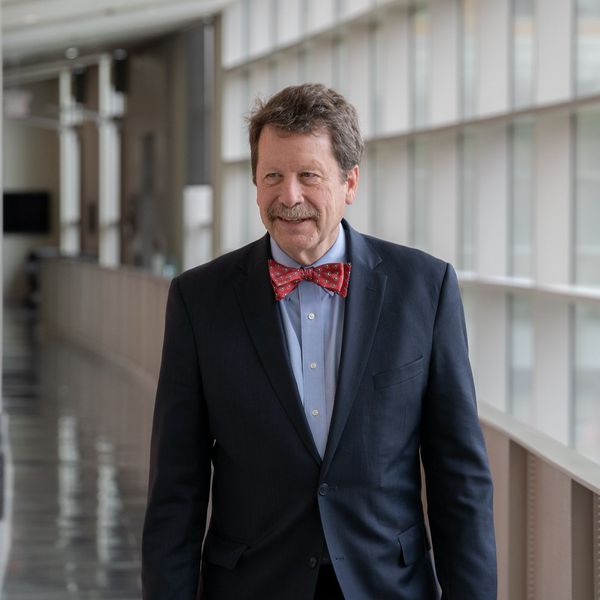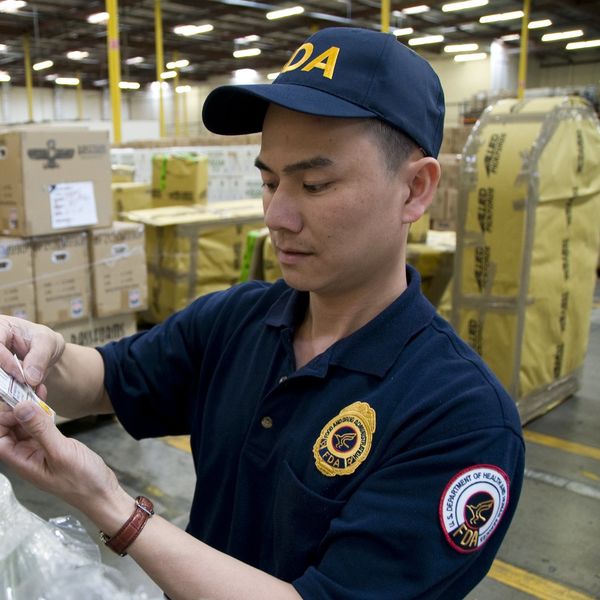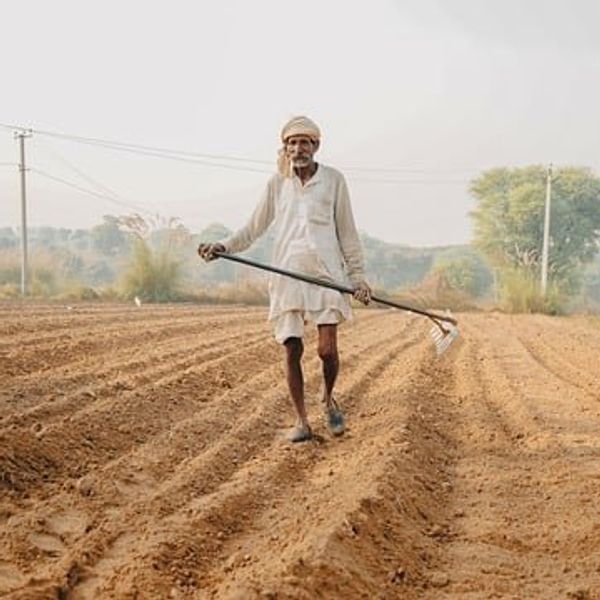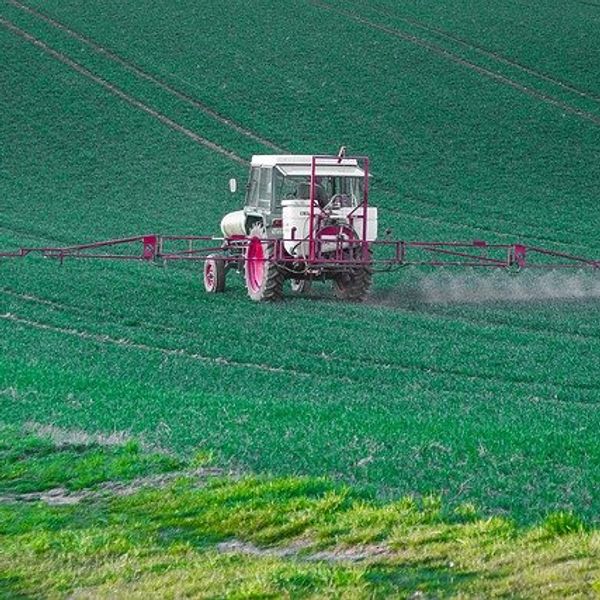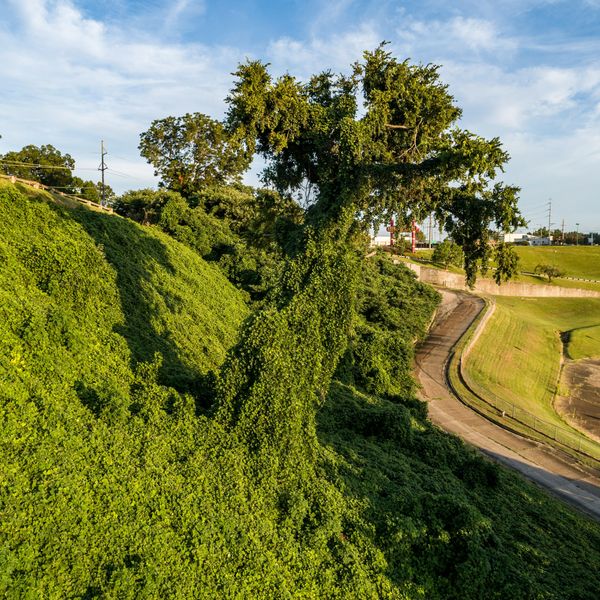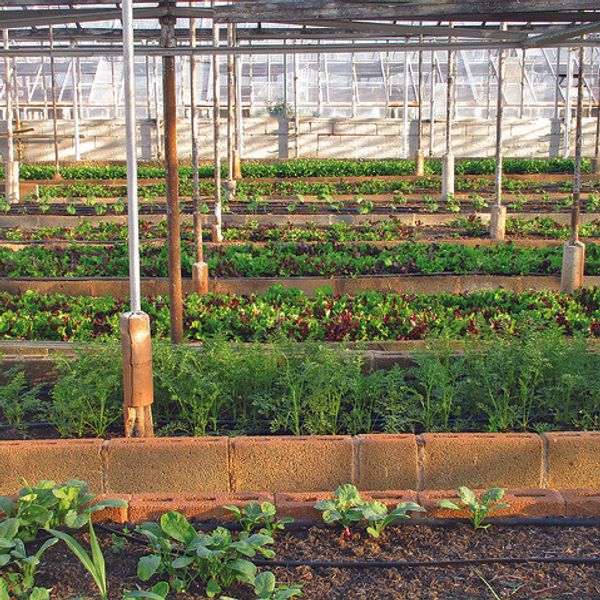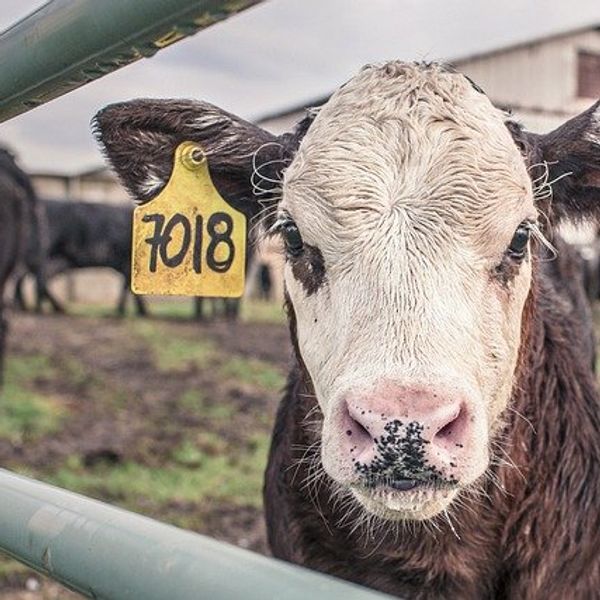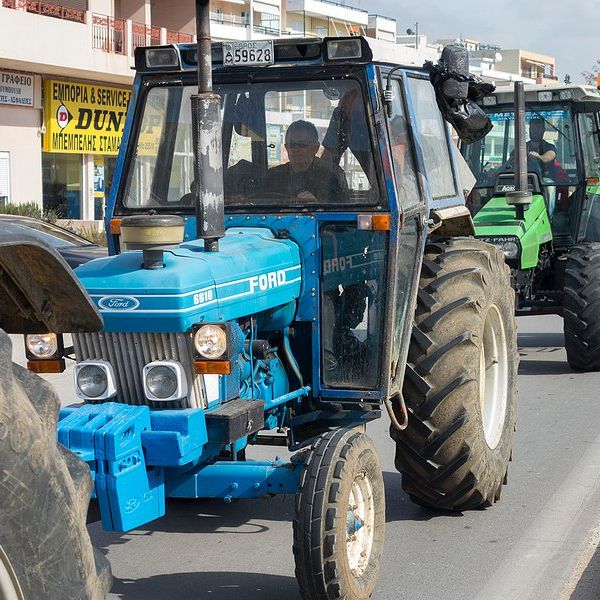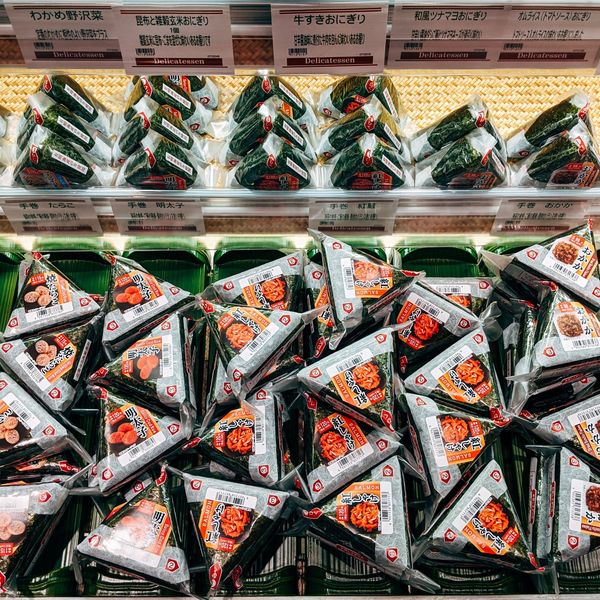Dr. Mike Anastario joins the Agents of Change in Environmental Justice podcast to discuss his work in the corn and sorghum fields of El Salvador, where he seeks to understand the relationship between workers and the land and how farm chemicals could be harming them.
Anastario, an assistant professor of health sciences at Northern Arizona University, also discusses his upcoming book, Kneeling Before Corn: Recuperating More-Than-Human Intimacies on the Salvadoran Milpa, as well as his decision to leave his former institution in Florida after so called “anti-woke” bills made him question his place there.
The Agents of Change in Environmental Justice podcast is a biweekly podcast featuring the stories and big ideas from past and present fellows, as well as others in the field. You can see all of the past episodes here.
Listen below to our discussion with Anastario, and subscribe to the podcast at iTunes or Spotify.
Transcript
Yoshira Ornelas Van Horne
Hey, y'all, welcome to a very special podcast. So my name is Yoshi. I'm one of the assistant directors for Agents of Change. And I'm also an assistant professor at Columbia. And today I have a dear friend of mine, who I actually met through one of the fellowships that we're both part of. So I'll let Mike introduce himself.
Mike Anastario
Thanks, Yoshi. My name is Mike Anastario. I'm an assistant professor of health sciences at Northern Arizona University. And I'm part of the JVP Harvard Environmental Health fellowship that we're both part of. So thanks for having me here today.
Yoshira Ornelas Van Horne
Of course. And I actually have to let our listeners know, I think this might be if not the first one of the first podcasts that we actually film in person in the same location. But also, the special thing about this podcast is that we're actually both wearing bathrobes. Because we're, we happen to be at the same time in Atlanta for this workshop. So, you know, it just coincided that we're trying to film this at the same time. So you know, we'll go ahead and get started on the actual questions that you joined us here for today. And so, you know, I for our first question, we usually like to ask our audience, or not our audience or your guests, you know, what brought you to the field of environmental justice?
Mike Anastario
Sure. Well, it began about five years ago, when I was conducting ethnographic research with corn farmers in El Salvador. And at the time, I was just sort of focused on studying their entanglements with traditional corn varieties and trying to understand the ways that they grew those varieties and the intimacies that form between plants and people during the act of cultivation. And it was during that research that I sort of became derailed. I started to focus on the agrichemicals that were obiquitous in their life ways. And this wasn't my original research question. It wasn't the original focus of my research, but I kind of almost couldn't help focusing on it, because those agrichemicals were impacting people's health in such profound ways. So for example, I had a friend who committed suicide with an aluminum phosphide tablet, I saw people with all sorts of agrichemical-related illnesses and injuries. And then of course, there was chronic kidney disease of unknown origin, which was killing farmworkers really young, and people didn't quite understand what was causing it. So that's sort of what drew my attention to agrichemicals. And I slowly became interested in environmental health through that ethnographic research.
Yoshira Ornelas Van Horne
And, you know, and I do want to touch up on a couple of different things, but just for those audience that haven't heard of the word ethnographic, can you describe that a little bit and what you know what type of research that is, particularly for an environmental health context?
Mike Anastario
Sure. So it's a it's a qualitative method. And you know, at the time I was doing ethno-ecological research, so this is is like a type of anthropological research. And basically what I was doing was a method that could be referred to as participant observation. So every day, I was waking up at 4am, with corn farmers and I would walk to the milpa – it's a small subsistence farm – with them every single day. And I would do what they do. So I did their work. And I'd say about every 45 minutes to 90 minutes, I would take a break and go sit under a tree and write down my field notes about what had happened in the last interval between notetaking sessions. And that that method can go on for months, if not years. It's a standard method used in the social sciences, but especially in anthropological research. And so what you do is you take field notes, and my particular style of doing ethnographic research is I take those field notes, and then I digitize them later in the computer. And then over weeks, months and years, you develop these very long sort of files that you can then code. And participant observation is just one type of ethnographic method. So it's the method that sort of grounded all of my ethnography. And but you know, ethnographic research can include other methods. So for example, I also did semi-structured interviews, I did questionnaires, I did triads tests, I did all sorts of things. But it was always sort of grounded in that act of participant observation, which is just sort of basically aimed at understanding people's everyday life ways and everyday behaviors, and finding meaning there.
Yoshira Ornelas Van Horne
Yeah, no, no, I think, and we've talked a little bit about this, and particularly bringing in that qualitative lens. And this is really where you get to know the context right? In the stories. And I think, particularly for agrochemicals, or, you know, other other fields refer to them as pesticides, because that's what we're talking about for agrichemicals, a lot of the time and I've done some, some pesticide work. And that data really, the question is, when we ask people if they've been exposed, as you know, do you use pesticides in your home? Or do you use pesticides in the field? but the methods that you were using, they really got down to being able to decipher what their everyday ins and outs exposures on the ground look like. And I think that was in and we'll get into the book that you know, Mike, Mike wrote a book. So that's also one of the things I want to talk about, because I didn't read the whole book, I'm gonna be honest with you, I read the chapter on pesticides exposure. And so we definitely want to get there. But I think, you know, particularly for, and I guess my question here is, what was Salvador and working with those farmers? Like, how did you encounter that group? Like, what led to you actually? Because I think in the past, you had a Fulbright, right, that actually took you there. So can you can you tell us like, how did that happen?
Mike Anastario
Sure. Well, um, so So it all actually began with, you know, I was doing quantitative research before all of this. And I was sort of fascinated by grounded theory, and just sort of inductive methods and inductive analytic approaches, but I didn't know much about them. So I began actually studying couriers, Salvadorian couriers who bring sort of goods like clothes, hammocks, food supplies, gifts between family members in El Salvador and sort of do export strongholds in the United States. And I wrote this book that was published in 2019, called parcels, memories of Salvadoran migration. But in this sort of grounded theory approach, I eventually became interested in the ways that the food that was being transmitted to spawn prickly was actually cultivated and grown because people were placing so much significance on it, you know, they were saying, "Oh, this, this food product that I'm getting from El Salvador, like in Boulder, Colorado, has this particular taste, and it gives me this these particular, you know, sensations and feelings." And so I became interested in well, you know, what does that food made of? what are its constituent parts? Where did it come from? How was it cultivated? and I eventually started following people's families into the field as they were cultivating that corn beans and squash are the three sisters, that co-occur in the milpa. And so what I did is I eventually had to stop that first part of the grounded theory experiment and published the first book, but the second book was sort of an extension of that, but it was so different. The field was so different because it was focused on farm work, and people's intimate interactions with not only plants but also agrichemicals. That I sort of saved it for a second book, but that's that's how I eventually got into it. So it was over a series of years, that I eventually sort of shifted focus into the actual sort of labor of farm work.
Yoshira Ornelas Van Horne
Okay, that makes a lot of sense. And I think I want to touch a little bit on the how the corn right and how sacred it is for a lot of different cultures. And, you know, I'm by no means an expert on on corn knowledge or its sacredness, but I know. And I think I've mentioned this before. So both my parents are from Mexico, right? So I very much identify as Mexican American and corn definitely has a huge history and sacredness. And both farming and everyday use in Mexico. And when you talked about, like, the different uses of corn, or, or that the food that you can trace, it actually always reminds me of my mom, who has the same and I'm sure some anthropologists or sociologists who study this, but she's very much of the mentality that like yellow corn is for animals. And that the the other the other types of corn, blue corn, white corn, some of those other ones is what, what humans actually are supposed to eat. So I don't know if there's an actual theory behind that.
Mike Anastario
Interesting. Well, so So in El Salvador, I would say most people, like there's maíz criollo amarillo, which is the yellow corn, but people people will eat it. But um, they would enter intercrop, the corn sometimes the sorghum, and sorghum tends to go to the animals. But you can also make tortillas on a sorghum. It's also the hardest labor I've ever done – pounding sorghum. But no, the corn itself, there are all types of varieties that were planted. But the one that I tended to focus most on just because it was the one that kind of cropped up most in Chilatanango where I was doing the research in northern El Salvador is called maíz capulín. And it's kind of like rainbow colored. It has these beautiful, like red and ruby hues to it and I was absolutely enamored with it. So most people were growing. And yeah, the you know, corn does have sacred significance in the region. And it's, it's, it plays a heavy role in the Popol Vuh, which is the sacred text of the Maya, grandmother Ixmukané grinds, forms human flesh out of ground corn to create the first humans. In El Salvador, especially in the region where I was working, there wasn't a lot of indigenous identity. But there were sort of a lot of syncretic practices. So what I mean by that is, like, you know, maybe you have a legacy of indigenous practice that's now been mixed with, you know, Christianity or Christian practices, or understandings and beliefs. And that's what you're observing today. So even if the people practicing certain cultivation techniques don't identify a method as indigenous, it might have come from indigenous people in the past.
Yoshira Ornelas Van Horne
Okay, so so, you know, now I do want to do I dive into the book a little bit, and I realize your book, which is titled "Kneeling before corn," it doesn't actually come out until later this year, right?
Mike Anastario
Yeah.
Yoshira Ornelas Van Horne
And I know you've described it as a very much like, you know, an academic meant for academics in this area. And in there, the chapter specifically that I want to talk about a little bit was on agrochemicals. And then there you introduce this concept of more than human intimacies. So I want to give you a chance to, to talk about what that what you're referring to in there.
Mike Anastario
Okay. Yeah, so my new book "Kneeling before corn: more than human intimacies on the Salvadoran milpa." It's a book that I wrote with two co authors. The first is Elena Salamanca. She's a Salvadoran poet, who's currently doing her PhD in history at El Colegio de Mexico. And Elizabeth Hawkins, she's a San-Salvador-based attorney. So yes, in the book, the major conceptual contribution is more than human intimacies. And those are what we define as everyday sensitivities to reflections upon and attunements to non-humans that are assembled with humans in their particular life ways. So, you know, to talk about that in a less theoretical context. What really drew my attention to it at first was farmers sort of talking about having this remote sense of what's happening on their milpa plan and happening with the plants. So for example, farmers could be at their home and say, like, "oh, I can sense that somebody's walking through my milpa." But even though when they were far away from it, that wasn't the only thing that happened that kind of fascinated me as a social scientist, you know, people would talk about having these really intense dreams about their milpa, but and what was happening on it, and sometimes those dreams would come true. You know, so again, sort of like from a union psychology point of view, I'm not a psychologist, but I was just kind of taken by that. And I was taken by all of the meaning and significance that people were devoting sort of to those topics and talking about their milpas. And so what happened is when I first started following farmers into the field and doing that labor, which quite frankly, is Is grueling, it's excruciating. And even as I did it my first day, I thought, "I don't think this is for me, like, I don't think I'm meant to be out here. I feel like I have a fever, I'm dehydrated." But what happened the first night after I did that intensive participant observation is I just had these overwhelming, like really visually stimulating dreams about corn. And it was like, so pleasurable, and I woke up in the morning, and I had slept for 10 hours. And I mean, I was exhausted, it was great sleep. But I just had this really these really vivid, stimulating dreams that sort of drew me back, I wanted to go straight back to the field, even though it was a painful experience. And so that's sort of what drew me in and what helped me start thinking about this concept of more than human intimacy that I then studied ethnographically.
Yoshira Ornelas Van Horne
Again, what I took, so as I mentioned, in the beginning, I work on pesticides, what I've looked at as a pesticide exposures and asthma, and but that data comes from from particularly in the context of California, and they've done a really great job of having pesticide-use data from, you know, spraying in different agricultural contexts. And so that data is publicly available. And I think for when you in particularly this chapter in anyone that does qualitative work, you know, I was very struck by in your context, and with the milpa farmers, like we have their stories, and you talk about them developing rashes, or them having the symptoms and there is also this chronic disease epidemic that is taught to... or pesticide are thought to play a role, a role, but there's no actual data, right?like when we think about quantitative data, and so I think I, for this is very much when your type of work comes, comes through. And I do want to delve a little bit more into into this topic, because for one of the other things you like to use as your life history calendars. Right. And I think for some of us that do this work, when we ask people like have you been exposed at different stages of your life, and some of the work that you you're going actually with with participants? I was struck when when when you ask them that they actually defined her your stages of your life differently. So maybe that's something that you want to expand on. As a part of this.
Mike Anastario
Sure. Well, I've seen I've seen epidemiological studies, which I highly I highly value and recognize the way that they're being done have have to be done a certain way. But they were they they've been –and again, this is just a methodological difference–, what was so different from my ethnographic data was just sort of the way that people were asked about their their exposure to agrichemicals. So I'll get concrete by what I mean about that. You know, I would see people eating breakfast on the milpa. But for example, like maybe we've worked from 4am to 7am. And then we're eating breakfast. And a farmer might say to me, "oh, that Atrazine tastes really bitter." And I would think to myself, "I don't think anybody should ever know what Atrazine –which is an herbicide, a toxic herbicide– I don't think anybody should know what Atrazine tastes like." But it's because you have it on your hands and you haven't washed your hands and you're grabbing a tortilla and you're putting it in your requesón and frijoles and you're eating your breakfast and like, yeah, you're consuming a little bit of Atrazine. You know, or people would talk about their children getting drunk on cipermetrina, which is Cypermethrin. It's a insecticide that's applied to sorghum seeds. And I would think like, "okay, yeah, that's one way to sort of describe what you're seeing children being drunk on sorghum but they're being intoxicated as children on sorghum." And so what became difficult is when I wanted to talk to people about their, their sort of memories of agrichemicals, I had to think about how to ask the question, because especially... the ways that we've worded in English and then translated to Spanish and you know, an interviewer or a questionnaire administrator might word something really fast, like "have you ever been exposed to her chemicals? Or have you ever used..." and sometimes people don't even know what that means or pesticides. But so what I would try to do is ground people's agrichemical use in their everyday experience. So most people begin with fertilizer. And again, I know in environmental health, we tend not to focus on it because it's not considered as toxic as the herbicides and insecticides. But if you think about a way a farmer might budget and and go about purchasing something, usually first they're going to, they're going to purchase or obtain fertilizers. And so in the corn growth cycle, you would normally apply like NPK at planting that's nitrogen, phosphorus, potassium at planting. And then you would do that again and mix ammonium sulfate into the fertilizer after about four weeks and then apply urea urea at seven weeks. And so once you're, once you're sure that you can obtain sort of those fertilizers If you have the budget for it, then you sort of see what comes next. And for a lot of farmers I was working with, it was either paraquat or glyphosate. But for me in establishing the way somebody remembers agrichemicals, I sort of have to go through all those chemicals that we really don't care about. Because for them, it anchors the agrichemicals, so they can say, "oh, yeah, in that year that you're talking about right now, which might be three years ago, which might be 10 years ago, like I can remember, that was a good year where I had enough money for not only all of those, but you know, back then paraquat was only available." And then "oh, I remember in 2008, glyphosate became available." So you get these sorts of complex stories from people about when and how they used something. And then I also just saw sort of everyday ways that people had exposures to agrichemicals that I think sometimes we don't think about when we're designing questionnaires. So for example, like I would often have to excuse myself, from sleeping in rooms at night where agrichemicals were being stored because the smell of the chemical was so potent, and I thought to myself, like I don't think it's good to be sleeping in here, you know. So, the one that really worried me most was parathion. So it was used to cover corn seeds to keep them protected from weevils and ants. But I can remember sleeping in a hammock one night or trying to go to sleep and thinking like "that smell is so overwhelming. And then I thought to myself, that smell is parathion", like, "I think I gotta get out of here." But you know, people's children, and people will sleep in that room themselves. The other thing that people do is they put aluminum phosphide tablets, into tin cans, to cure their corn. But sometimes they'll eat the corn too fast, or maybe the the aluminum phosphide will spill out of the can and a little will get into the corn and you know, it's super toxic. But I often think about those things that we might never think to ask about or even include in a questionnaire. So that's some of that data that came out of the the ethnographic data. But then sort of getting back to what you're what you're saying, I slowly started thinking about ways to have a more structured approach to asking people about this. And that's how I arrived at life history calendars, but it sort of took me years to get there. Because I had to do the ethnographic research first to sort of see how people were interacting with these chemicals. And then like, where they were getting confused in questionnaires and like where I wasn't satisfied with like life life history matrices, and we sort of arrived at life history calendars, and I started experimenting with those.
Yoshira Ornelas Van Horne
No, I think well, thanks, you. And I would agree with with what you said earlier, like no one really should know what these actually tastes like. Right? I think we're all very much looking forward to the upcoming book. And so you know, to sort of change gears a little bit I am I do want to talk about, you know, some of the current more overall views on higher education. And you recently moved from you were an assistant professor at Florida and are now at NAU, and I know, that was, particularly because of a lot of the current views and attacks that are being done to the higher education system. So I just want to give you a chance to talk about how that transition has been going from one place to another one. And and I know you also mentioned that this has actually improved your blood pressure. And so you know, definitely, you know, I think we can definitely get into that.
Mike Anastario
Absolutely, yeah, I was in Miami at Florida International University, I had a lot of great colleagues there. I really loved the people I worked with, but it was just a strange time to be in academia. So I was in El Salvador for six years before coming back to the United States. And, you know, I didn't think much about it at first. But the two pieces of legislation that were passed, – House Bill 7 and House Bill 7051 –Those are known as the "Stop Woke Act" and the post secondary education bill, those sort of came into existence as I was at the university. And again, at first I was sort of like, huh, does this matter? What is this? is this just for show? is this sensationalist? But as I saw the legislation start to be implemented, and it sort of result in, you know, the creation of websites or inquiries concerning textbook selection or, you know, textbooks being on file for five years, and I started to see the ways that that worked through the administration. And you know, we were forced to do it. Lots of people with goodwill are just forced to do things pursuant to the legislation. I started to get really worried about it. And then, you know, students in the classroom as well, they're, they're interested, they're curious people. They want to know what Critical Race Theory is and why it's a problem. And I started to ask myself as an instructor, you know, often with many students who claim the minority identities in the classroom I I found myself saying to them, I don't know that I'm allowed to tell you like I don't, you know, "I don't I think if I explained it to you, you, you would see how kind of silly all of this is. But I actually don't know that I'm allowed to answer your question." And I thought at that moment, like, "this is not why I came back to academia." Like, this is not what this is supposed to be about, like, there's something fundamentally wrong here. And, you know, I worked with a lot of people who this deeply troubles. And so you know, at that time, I just had a lot of things going on in my life, but I thought, you know, maybe it's time to look elsewhere. So I did, and, you know, I got a, I found this position at Northern Arizona University. And, again, there's tremendous colleagues out there with whom I'm working, and I made the moves. And, you know, there's a lot of reasons I think my blood pressure went down, getting away from House Bill 7, and a House Bill 7051, were certainly related. But I'm living in living in Flagstaff as well. It's just a beautiful part of the country. And it's a super fun place to be. And I really love that move. So yeah, I would say that life is has been better since moving.
Yoshira Ornelas Van Horne
what we've seen in these past couple years, you know, where people don't even want to say critical race theory, because it's seen as so controversial. And I remember you telling us that, you know, the outsiders were like looking to people syllabus, and, and banning textbooks, and it just seemed very, it just didn't seem like the right way to go about this. So I'm glad you found a home, in my home state, Arizona. So very much connected. So So I'm glad that you're in this new environment that hopefully is more conducive to the work that you're doing. And you're new, you're trying to advance because it's definitely one of those things when you feel supported, not just by the people around you, but an institution and the broader community, it very much helps get into the right mindset, and you actually thriving, not just surviving, right?
Mike Anastario
Yeah, exactly. And especially in this field, like when you're doing work on health disparities. You know, of course, of course, you know, there's there's always this angle at which, or this point at which you start to think like, oh, is this work going to become political? Or could this be observed in a political way, but at the same time, you're also just trying to advance the science for another reason, like, in my case, it's to advance the science of harm reduction. And you know, when you kind of get diverted from that, sometimes I wonder if this is, this is half of what's going on here is to divert us from our projects, right? Because you start to question yourself. And when you're questioning yourself, you question your work, and you stop doing good work, because you're afraid of what you're doing. And it's, it's just kind of ridiculous in 2024r now, to be thinking like that. So, yeah, having that sort of intellectual liberation has been has been great.
Yoshira Ornelas Van Horne
Well, we look forward to more of your intellectual liberation. You know, I do I do have one last question. And this is the one I'm totally stealing this from, from Brian, from Agents of Change. And he usually likes to ask people who, who come into podcasts? What is the last book you read? For fun?
Mike Anastario
For fun? When you say for fun...
Yoshira Ornelas Van Horne
For fun, like, I mean, maybe you still I mean, I know you find academia, a lot of fun. So if that's what you want to bring up, but usually, you know, people pick some non-academic text.
Mike Anastario
Oh, gosh, I have to apologize here. So I was really moved by this book. I wouldn't say I mean, absolutely. It absolutely was fun, but it was hard to read. But I also just want to highly encourage that people read it. So the book, the book was written by Isabel Stingers. She's a philosopher, and the book is called "Virgin Mary and the Neutrino." It was translated into English and published by Duke University Press in 2023. And it's all sort of about ecologies of practice, that occur in the scientific community, as well as sort of debates between what we would think of as like, you know, bench or hard scientists and either non scientists or post modernists and like, where these sorts of debates came from and how they operate. It's a completely stimulating book. It's completely altered the way I see the world and even think about my own work, and I highly encourage others to read it.
Brian Bienkowski
That's all for this week, folks. I hope you enjoyed Yoshi's conversation with Mike. If you enjoy this podcast, visit agentsofchangeinej.org And while you're there, click the donate button to support us. Or sign up for our free monthly newsletter or why not just do both. You can also find Agents of Change on X and Instagram and please follow us on Spotify or iTunes, where you can subscribe give us a rating and never miss out on an episode.
- LISTEN: Carlos Gould on wildfire smoke and our health ›
- LISTEN: Dr. Beverly Wright on how to keep environmental justice momentum ›
- LISTEN: Denise Moreno Ramírez on protecting workers in auto shops and beauty salons from toxics ›

